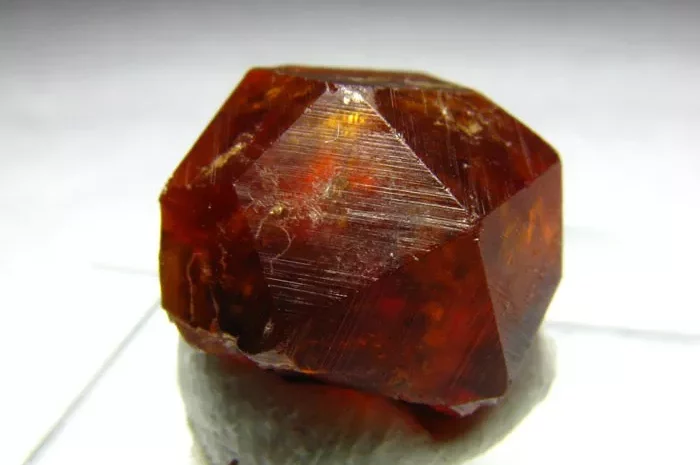In contemporary times, garnet has often found itself relegated to the role of January’s understated semi-precious birthstone. However, beneath its unassuming exterior lies an intricate tapestry of historical significance, coveted by monarchs, intertwined with mythology, and endowed with distinctive physical properties that render it among the most captivating of gemstones.
1. A Linguistic Link to Seeds: The Genesis of “Garnet”
Before embarking upon the captivating chronicles of garnet’s past, a glimpse into its nomenclature reveals its profound connotations. The etymology of this gem’s name traces back to the Latin “granatum,” an epithet that traversed medieval English via French as “gernat” or “grenat.” “Granatum” encompassed not solely the gem itself but also encapsulated the essence of pomegranate seeds, establishing a poignant connection between nomenclature and mythology.
2. Garnet’s Mythic Weavings
Garnet’s antiquated mythology predates the advent of Christianity by several centuries, a fact often obscured in contemporary narratives. Traditional astrological lore intertwined garnet with the sun. Yet, paradoxically, this gem also wove a thread into the underworld’s fabric through the prism of Ancient Greek mythology concerning Persephone. The seeds she ingested in the nether realm, akin in hue and texture to garnets, sentenced her to three to six months of subterranean sojourn annually.
3. The Spectrum of Garnet’s Colors
While garnet manifests in diverse silicate compounds, five principal variants reign supreme as valued gems. The classic deep red garnet assumes the titles of pyrope and almandine. Another luminary, “tsavorite,” christened after the Tsavo East National Park of its discovery in 1967, finds its home within the grossular garnet lineage. Further kin encompass spessartine and andradite garnets, boasting an array of shades spanning from vibrant mandarin to translucent crystal.
4. Chromatic Chameleon: Garnet’s Color-Altering Feat
Historical belief once held that garnet exhibited every hue except the elusive blue. Yet, the year 1990 ushered in the revelation of bluish-purple garnets from Madagascar. Composed of an amalgam of mineral facets, these gems cloak themselves in cerulean under daylight’s embrace and transmute into violets beneath incandescent allure. Prized as the paramount garnet iteration, these treasures command valuations exceeding a million dollars per carat.
5. Garnet’s Global Odyssey
In the annals of Western history, Bohemia, now a constituent of the Czech Republic, monopolized garnet extraction. In modernity, their dominion extends across global boundaries. The resplendent green of tsavorite garnets and the fiery orange hues of spessartine garnets unfurl their brilliance across East Africa, particularly Kenya, Tanzania, and Madagascar. Beyond, garnets also grace Brazil, the Indian subcontinent, and the United States with their presence.
6. Garnet’s Scriptural Reverberations
Carbuncles, a term erstwhile denoting a polished garnet or a facetless stone, boast a lineage entwined with both the Old and New Testaments. These jewels, reframed during the early Middle Ages, adopted an alternative Christian mythology with the advent of Christianity. Lapidaries, volumes detailing gem properties and meanings, etch the transition. Lapidary historian Joan Evans chronicles the likes of Bede, Amatus of Monte Cassino, and others, all rooted in biblical passages, particularly from the Old Testament, echoing Proverbs 3:15’s proclamation, “She is more precious than rubies.”
Isidore of Seville delves into the sacred breastplate’s gem composition, worn by the High Priest of the Israelites for divination (Exodus 28:17 and 39:10). This mirrors the depiction of city walls in Revelations 19-21 of the New Testament. Ezekiel 28:13 evokes man’s genesis “in Eden, the garden of God,” cloaked in precious stones, including the garnet-like “carbuncle.” The enrichment of God’s blessings, per Isaiah, is symbolized by “windows of agates” and “gates of carbuncles” (54:12). Gregory the Great links various gems to celestial orders, assigning carbuncles to archangels, invoking protection. Symbolic droplets of blood are mirrored in garnet-adorned depictions of Christ crucified.


